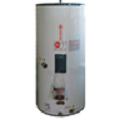
Adapt This Technique to Your
Situation and Get the PDF Download from
Paypal-Payloadz for Under $ 1

125 kb 0.99
Time Emits Calendar Research Ancient Calendars of the Holy Bible |
|---|
 Eco-friendly citizens are willing to
consider solar renewable energy alternatives. Two primary
solar applications that come to mind immediately are solar thermal
and solar photovoltaic (pv). Solar thermal covers a range of
topics, including water heating, space heating and the latest
innovation, air conditioning. Light is another property our
sun provides daily. Photovoltaic cells assembled into panels
capture and transform sunlight into electricity. Manufactured
pv panels are available in a variety of sizes and electrical
specifications. Installers use special building techniques for
each unique site to construct multiple panels into arrays.
Eco-friendly citizens are willing to
consider solar renewable energy alternatives. Two primary
solar applications that come to mind immediately are solar thermal
and solar photovoltaic (pv). Solar thermal covers a range of
topics, including water heating, space heating and the latest
innovation, air conditioning. Light is another property our
sun provides daily. Photovoltaic cells assembled into panels
capture and transform sunlight into electricity. Manufactured
pv panels are available in a variety of sizes and electrical
specifications. Installers use special building techniques for
each unique site to construct multiple panels into arrays. |
Going_Solar_Pathways
trains renewable energy salespersons and homeowners how to
prepare for permanent solar installations prior to making
any commitments. A brief summary of the steps needed are
Site Survey, Consider Regulations, Costs and
Payback, Rebates and Incentives. Home improvement
challenges differ according to locale. Apply the following
teaching tools as a guideline to aid decisions involving
solar. Cart Item GSP Adapt This Technique to Your
Situation and Get the PDF Download from
Paypal-Payloadz for Under $ 1
|
 125 kb 0.99 |
 I tell the couple a solar water heating
system should reduce their monthly electric bill by 25%. After
number crunching, I estimate future bills will compare some $62.50
less. “Your bill should average $187.50 monthly next
year.” I pause for reaction and continue, “so long as the
electric rate remains the same.” Mr. Smith falls from his
chair, laughing aloud. Mrs. Smith lowers her head and
sobs. I discovered their “hot button!” We extend the
numbers to get the annualized $750.00 electric savings. I
arrange for the Smiths to meet with Mr. Contractor, my direct
employer. I also inform Mr. Contractor of everything I found during
the preliminary site survey and show him pictures to support my
observations.
I tell the couple a solar water heating
system should reduce their monthly electric bill by 25%. After
number crunching, I estimate future bills will compare some $62.50
less. “Your bill should average $187.50 monthly next
year.” I pause for reaction and continue, “so long as the
electric rate remains the same.” Mr. Smith falls from his
chair, laughing aloud. Mrs. Smith lowers her head and
sobs. I discovered their “hot button!” We extend the
numbers to get the annualized $750.00 electric savings. I
arrange for the Smiths to meet with Mr. Contractor, my direct
employer. I also inform Mr. Contractor of everything I found during
the preliminary site survey and show him pictures to support my
observations.